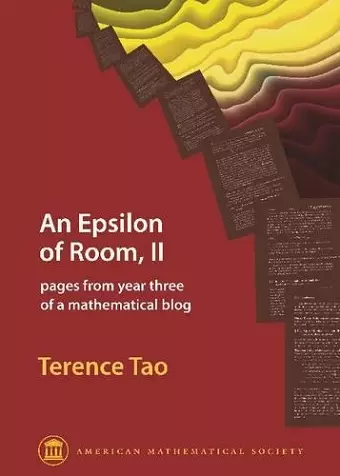An Epsilon of Room, II
pages from year three of a mathematical blog
Format:Paperback
Publisher:American Mathematical Society
Published:1st Feb '11
Currently unavailable, our supplier has not provided us a restock date

There are many bits and pieces of folklore in mathematics that are passed down from advisor to student, or from collaborator to collaborator, but which are too fuzzy and nonrigorous to be discussed in the formal literature. Traditionally, it was a matter of luck and location as to who learned such "folklore mathematics". But today, such bits and pieces can be communicated effectively and efficiently via the semiformal medium of research blogging. This book grew from such a blog. In 2007 Terry Tao began a mathematical blog to cover a variety of topics, ranging from his own research and other recent developments in mathematics, to lecture notes for his classes, to nontechnical puzzles and expository articles. The first two years of the blog have already been published by the American Mathematical Society. The posts from the third year are being published in two volumes. This second volume contains a broad selection of mathematical expositions and self-contained technical notes in many areas of mathematics, such as logic, mathematical physics, combinatorics, number theory, statistics, theoretical computer science, and group theory. Tao has an extraordinary ability to explain deep results to his audience, which has made his blog quite popular. Some examples of this facility in the present book are the tale of two students and a multiple-choice exam being used to explain the $P = NP$ conjecture and a discussion of "no self-defeating object" arguments that starts from a schoolyard number game and ends with results in logic, game theory, and theoretical physics. The first volume consists of a second course in real analysis, together with related material from the blog, and it can be read independently.
Overall, this is a fascinating book in which to dabble, with much elegance, and much that will inspire the reader. It is recommended to all readers from graduate students up." - Mathematical Reviews
ISBN: 9780821852804
Dimensions: unknown
Weight: 460g
248 pages